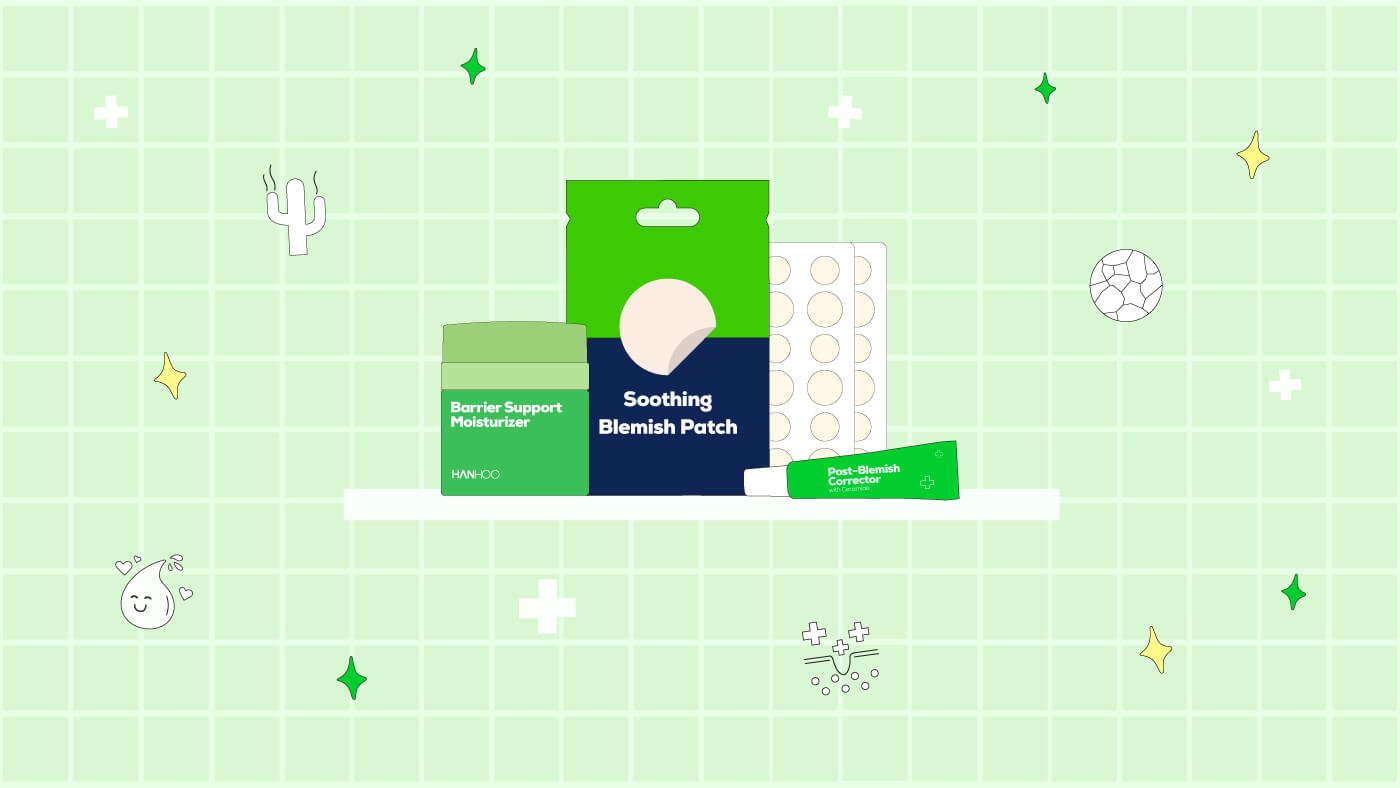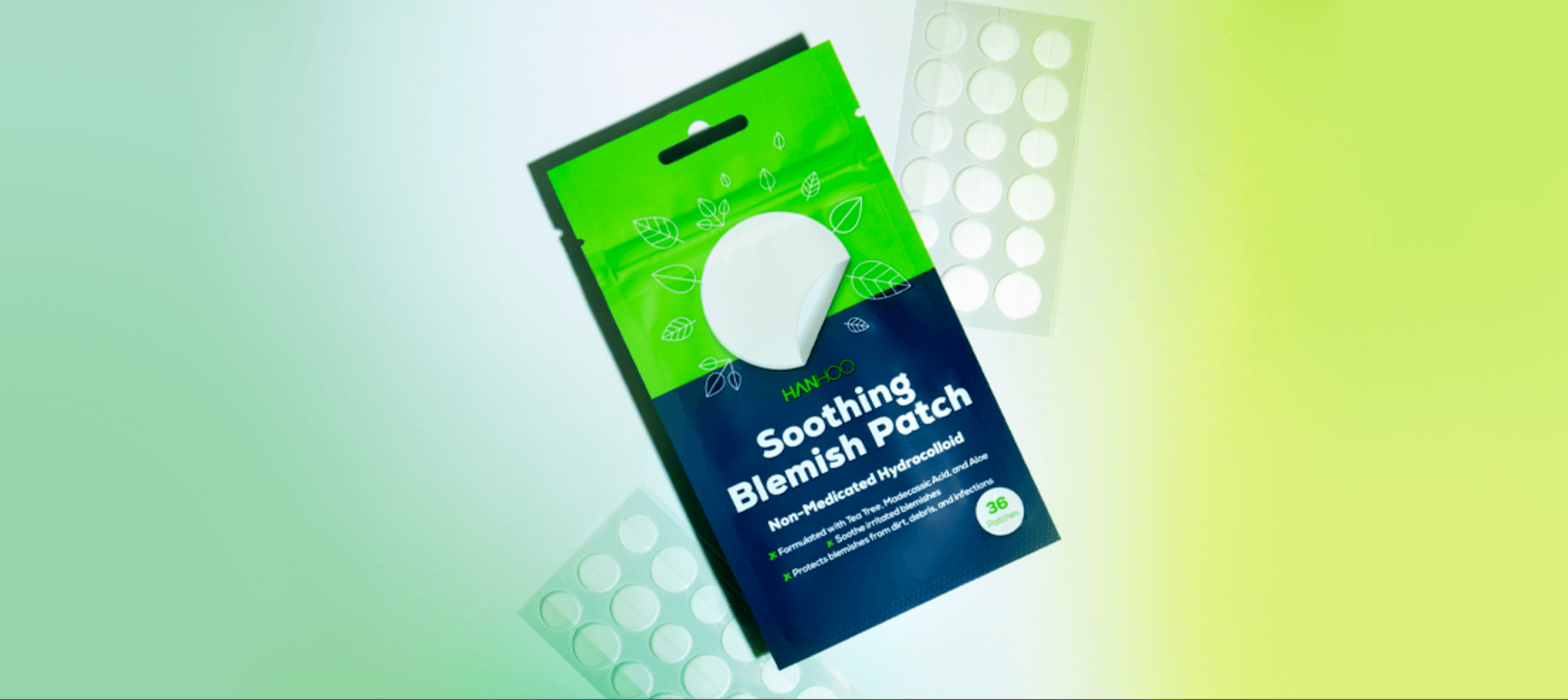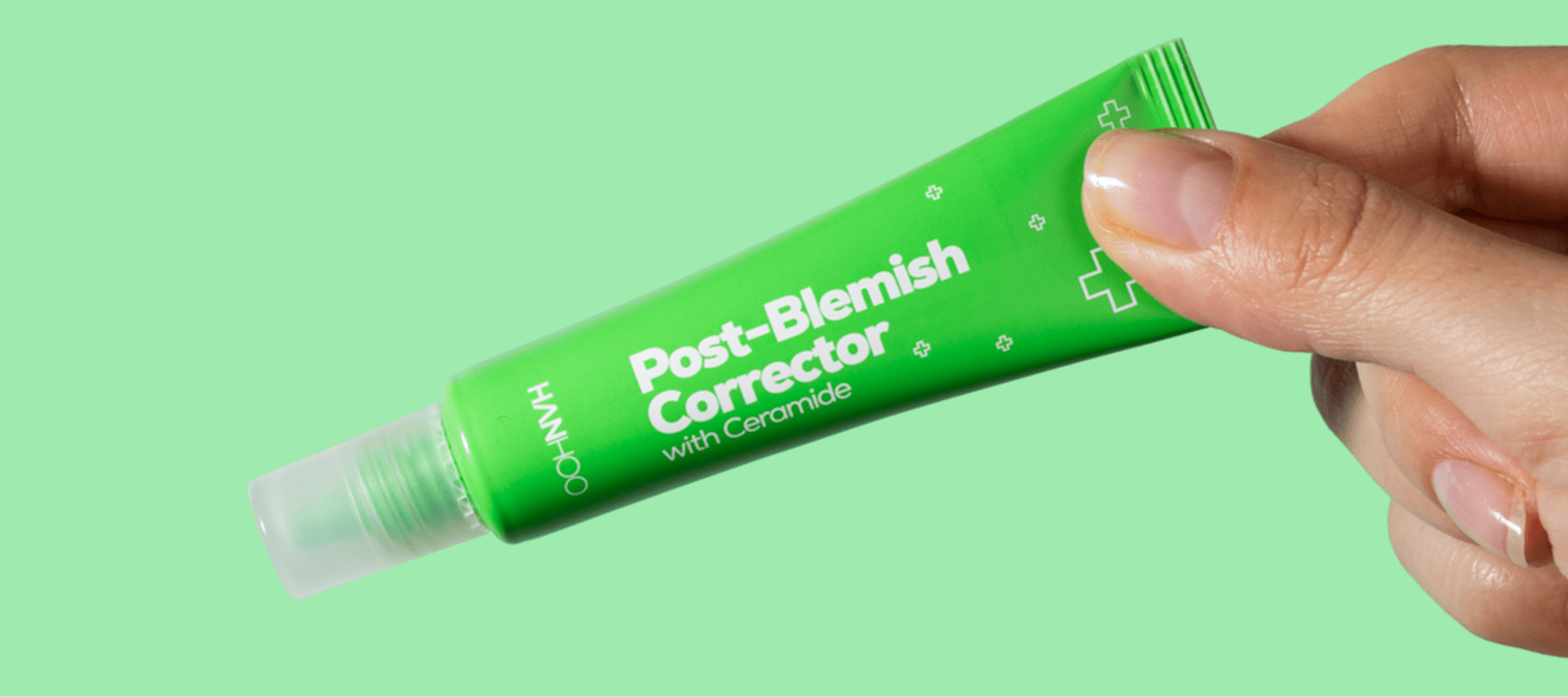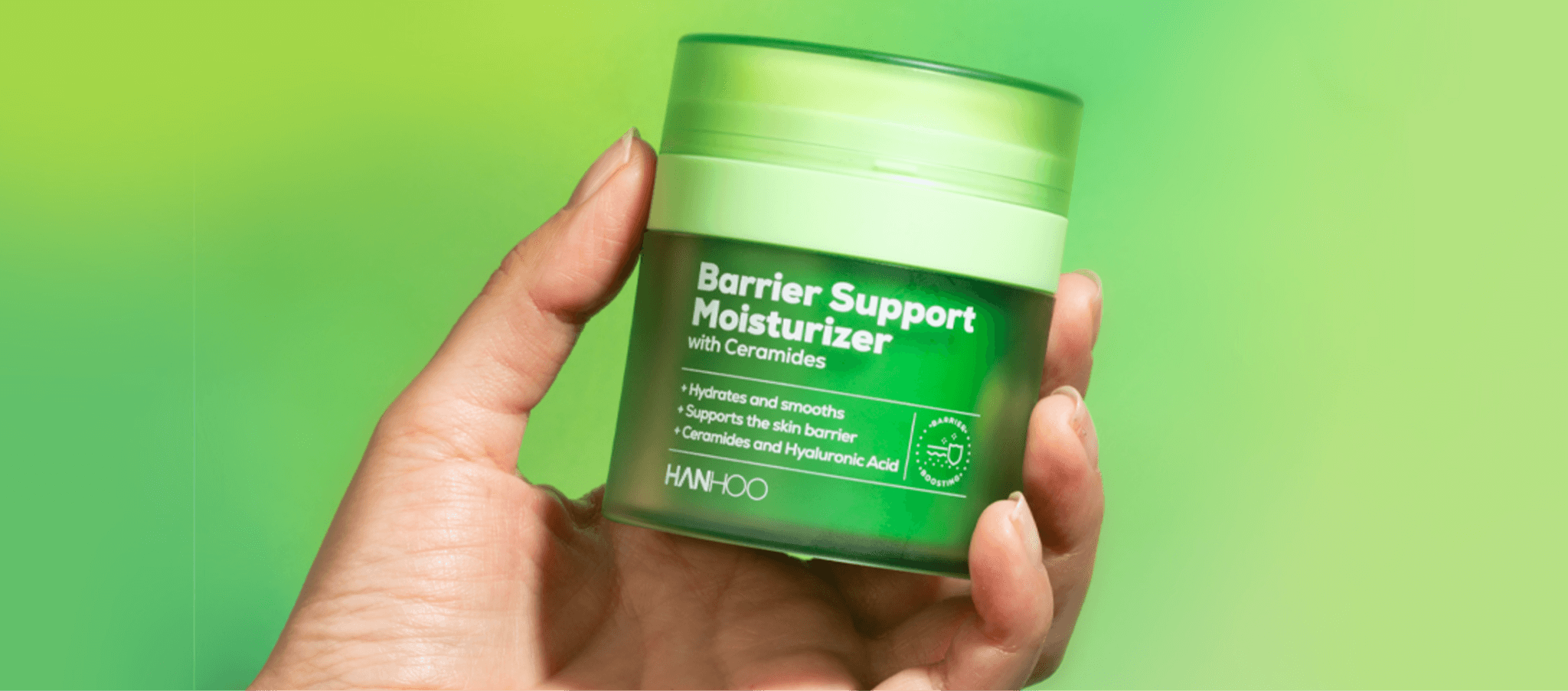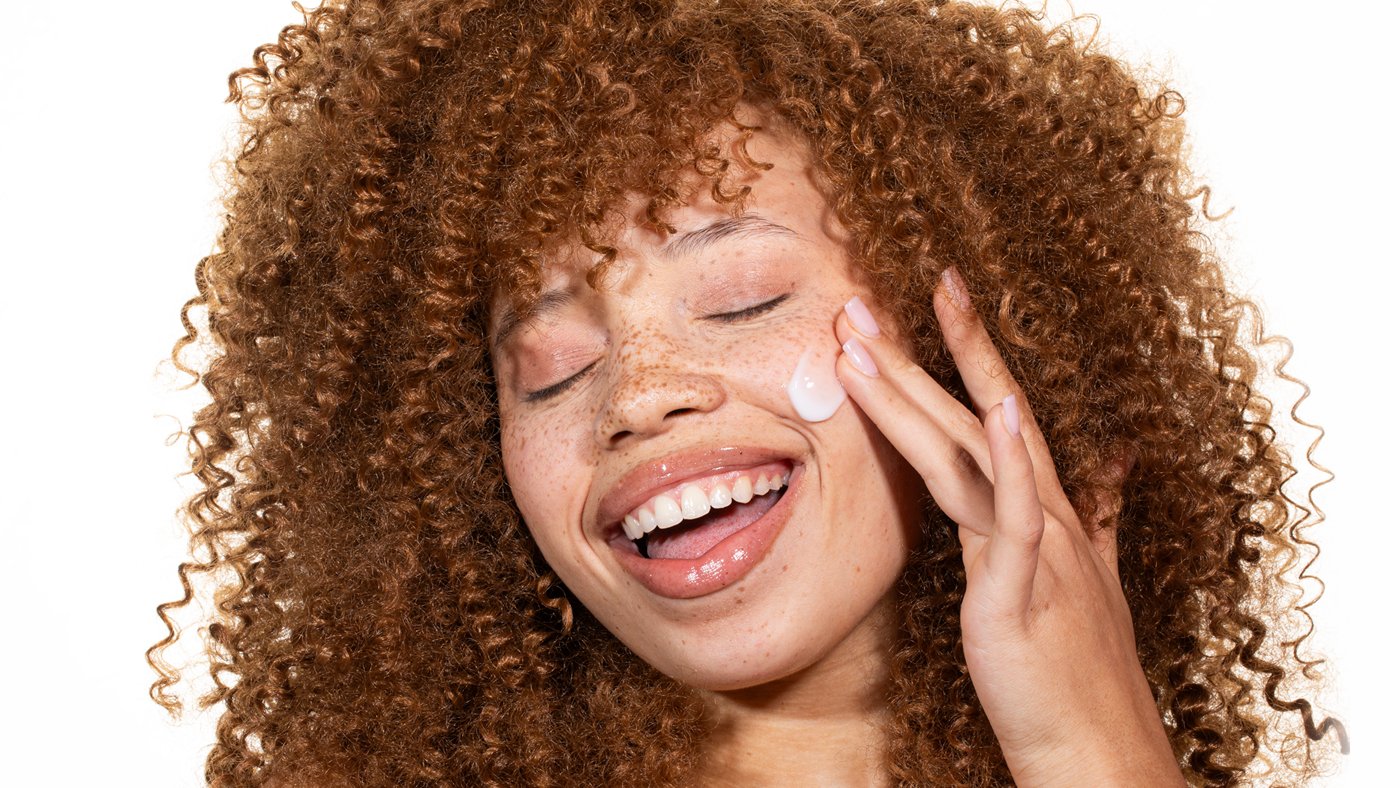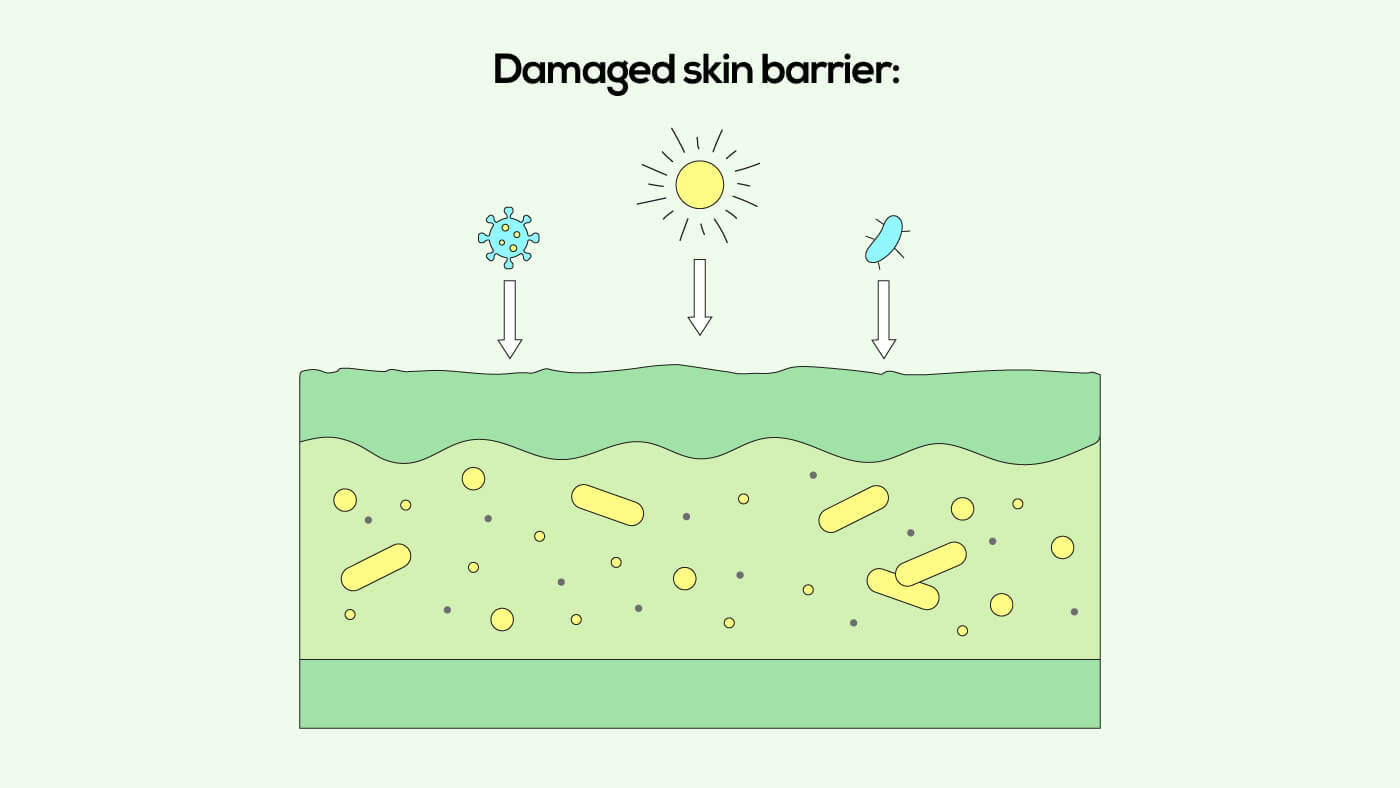Even if you don’t belong to the dry skin type category, you can still experience dry, flaky skin especially when dealing with acne.
While you probably identify with a certain skin type, there are some factors that can sometimes cause that to change or throw in unwanted effects. For example, if you typically have oily, acne-prone skin you may have noticed that if you overdo exfoliation or strong acne treatments you can trigger dryness in the skin.
And no, this doesn't necessarily mean that you now have a dry skin type. It’s typically an indicator that something is off with your skin, particularly your skin barrier. Damaging the skin barrier can come in the form of dry, tight, and sometimes flaky skin.
So, if you don’t have dry skin but only sometimes experience dryness what can you do?
Causes of dry, flaky skin
If you have oily, combo, sensitive skin, or even a combination of some of these then acne can sometimes tend to follow.
When it comes to treating acne, lots of treatments can have drying effects. Acne-fighting ingredients like Salicylic Acid and Benzoyl Peroxide are often recommended for acne-prone skin because of their effectiveness in treating and preventing acne. But, overusing products with these ingredients can have some unwanted drying effects.
Skincare habits like exfoliation can also be detrimental to the skin if overdone. Whether you’re using a chemical or physical exfoliant, you have to be careful about overexfoliating the skin as it can result in dryness, irritation, and redness.
The best way to avoid these unwanted effects is to follow the instructions on your acne treatments. They often recommend using such products only a few times a week, using small amounts, and following the use of such treatments with sunscreen to avoid sensitivity that can be triggered by sun exposure.
How to treat dry, flaky skin
If you’ve sworn off acne treatments because of the drying effects they can have on your skin, that doesn’t necessarily mean that there are no acne spot treatments out there for you.
For example, hydrocolloid patches are non-drying acne spot treatments that help suck up pimple gunk to reduce the size of the spot. And, hydrocolloid actually works by creating a moist environment to boost healing.
Our Soothing Blemish Patch is made of hydrocolloid plus some acne-targeting and soothing ingredients like Tea Tree, Aloe, and Madecassic Acid. Tea Tree helps target the acne while Aloe and Madecassic Acid (from the Cica plant) keep the spot hydrated. So you can treat pimples as they pop up without worrying about the spot looking dry and flaky once the pimple is gone.
But if you do find that some of your acne treatments leave pimples looking dry and flaky, then you can help moisturize the spot with a nourishing and reparative treatment. Our Post-Blemish Corrector is specifically formulated to help with post-acne skin. Whether it is post-blemish marks you're dealing with or dryness, the Post-Blemish Corrector is made with Ceramide, Niacinamide, and Tranexamic Acid to help treat both types of post-acne skin woes.
The drying effects of some acne treatments aren’t always contained to just the pimple itself. Sometimes you can experience dryness all over the face. This is typically a result of a damaged skin barrier. A damaged barrier can lead to irritation and can be more susceptible to factors that trigger breakouts.
So if you find your skin barrier in need of some help, you can help replenish the barrier through hydrating, nourishing products. Like an ultra-hydrating moisturizer to help support the skin barrier’s repair process. Like our Barrier Support Moisturizer which is made with a blend of Ceramides and six types of Hyaluronic Acid to deeply hydrate and restore the skin.
Follow the routine
Aside from our tips above, it also helps to pare down your skincare routine anytime your skin barrier is feeling vulnerable. A compromised barrier is characterized by a tight, dry feeling, irritation, and redness. So anytime your skin is starting to look and/or feel like this then try cutting down your routine to the bare essentials while your skin recovers.
Here is a simple routine to follow to help support barrier repair:
Step 1: Use a gentle cleanser
Step 2: If you have one, apply a hydrating treatment or serum
Step 3: Seal in hydration with a reparative moisturizer
Step 4: Protect the skin with sunscreen in your AM routine
Following a basic routine can help the skin barrier in its recovery process as you’re focused on restoring hydration. This doesn’t mean you have to follow this routine forever, just until your skin is comfortable enough to go back to your regular routine.
But, if the drying, irritating effects of a damaged skin barrier are too much to handle on your own, then it’s best to seek a dermatologist’s advice to help repair your skin.

